Every now and again I rummage through material I’ve collected for this Archive and get reminded of people and things that I haven’t turned my full attention to. Just before Thanksgiving, it was the files in my office related to the Joseph Vince Fencing Equipment Company. In the midst of the file I was going through were a large number of equipment catalogs. I thought I’d share a few.
The ’69-’70 catalog for the Joseph Vince Company. The circle logo next to Mr. Vince’s name is the symbol of Salle Mori. Torao Mori bought out Joe Vince when the venerable Hungarian decided to retire. Mori took over his Beverly Hills salle and also his equipment company, but kept the Vince name on the equipment company. Mori passed away in January of 1969, but his family continued to operate the equipment company for many years. When Heizaburo Okawa donated a large cache of material to the Archive, included were the files of the equipment business going back to the 1950’s.
Joseph Vince was responsible for assisting a fledgling equipment manufacturer in Japan get their products into the American market. Whether he approached them or they approached him I’m not sure, but I’ve found in his files manufacturing drawings detailing the exact specifications for foil guards and some other pieces of equipment. And I’m not sure if Vince was the sole US distributor for this new player, but I know when I was fencing in the late 70’s I would often run across this name on this or that piece of equipment. I think I still have an old bag of theirs, actually.
Tokyo Sports went big into fencing equipment, producing everything from weapons, parts, body cords, masks, clothing and scoring equipment, as you can see from this cover. This catalog is all about their line of scoring equipment.
The above is the first page inside the main Tokyo Sports fencing equipment catalog. On the left, you can see the “T/S” logo that you would find stamped on bell guards and such. The diagram on the right is a fascinating way to outline the complete circuit diagram for registering a foil touch. Few of these catalogs have publication dates, so it’s anyone’s guess when this is from. However, since the foil point in the above diagram is a ‘pineapple’ point, the drawing has to be from the ’60s. But on balance, the whole diagram looks like the layout for a small section of the Tokyo subway system. “Kanda to Meguro station in 12 easy stages!”
I don’t know how long, or even if, ever, Tokyo Sports dominated the Japanese market for fencing gear, but at some point they had competition in the form of Asahi equipment.
No dates anywhere that I could spot in the Asahi catalog. And if anyone can enlighten me as to what the heck that item on the cover is supposed to represent, I’m willing to entertain suggestions. A foil? A reproduction rapier of mysterious origin? Modern art?
As far as I can determine, neither Tokyo Sports nor Asahi are still in business. When they went under I’ve no idea, although I assume it was in the 1970s. Based on the number of other catalogs in the pile I pulled out of the files, the Mori’s were definitely keeping on top of what the competition was up to. Then again, I think a lot of these companies would use one another for suppliers of certain items, especially when one company had an exclusive deal with a manufacturer making something unique. I know Hans Halberstadt was the exclusive US distributor for Uhlmann machines and equipment for some period of time, likely due, at least in part, to the common language shared by Hans and Josef Uhlmann. For all I know they were pals while Hans still lived in Germany. Speaking of Hans…
Once again, not certain of the date of this catalog, but it references Hans Halberstadt in a way that infers he’s still alive, so pre-1966. This catalog actually has some things clipped out of it, but I can’t tell what the scissor-wielder was interested in.
Speaking of Uhlmann, they had catalogs for everything from scoring equipment to uniforms and everything in between.
This is the fancy-pants most modern of the catalogs in hand. Must be from the 1970s and it has some water damage, but there’s no mistaking the design of that guard socket. Hasn’t changed at all, has it? Although if I read the latest FIE missive correctly, they’re discussing making these body cord parts out of a see-through material. I guess someone figured out a new cheater wiring scheme. I don’t think it’s one that someone has been caught with, just a bug that could be exploited. Still, after however many years this has held up as-is, they’ve had a pretty good run.
More Uhlmann. That move the sabre fencer on the right is demonstrating in this photo? That’s illegal now. If you’re in the camp of loving the current state of sabre, we’ll just have to agree to disagree as to whether it ought to be illegal or not.
The scoring machine hardware manufactured by Uhlmann. This is the front and back page of this single-sheet catalog. Below is the inside.
The reels you see here, if you’ve never picked one up, double as boat anchors to keep them reasonably able to withstand the tug of the cable without following along behind the fencer like a puppy on a leash. Combine two of them with a scoring machine, plus reel cables, secure them in a hefty wooden box with a handle and you’re looking at flipping a coin to decide who gets stuck carrying this kit into the gym. I lost that coin-toss many times. These boxes were big, unwieldy and heavy. Well designed. Sturdy. They weren’t going to easily break down on you and were built to survive anything short of a direct hit from enemy artillery, but dang that’s a heavy box.
Of course, Uhlmann wasn’t the only name in equipment coming out of Europe. There was also Leon Paul out of London, around since the 1920s, but they aren’t represented in my stack of catalogs. Neither is France’s Prieur company. However, I do have an example of another French company, Soudet.
The Soudet catalog. This cover was torn or cut off the face of the catalog, but here’s the inside first page:
Mostly I’m avoiding showing much in the way of pricing, since it will just make those still in the market for fencing equipment really sad at how much prices have changed. Of course, since this catalog is all in French, I have to assume we’re looking at prices in francs not dollars, so what that would equate to in then-current dollars from a catalog I can’t date is anyone’s guess.
In addition to the above, there were of course all the east coast manufacturers and suppliers, of which there were many. Are any of these still around? I’m pretty sure not. Once the namesake for each of these suppliers passed on, the companies followed soon after. You can still find a lot of gear with these names on Ebay if you’re at all nostalgic for masks that do only a marginal job of protecting you. That’s just how they made them back then.
Founded and run by Gold-medal winning Olympian, Olympic coach and successful duelist Giorgio Santelli, the Santelli Company was in business for a very long time.
Here’s an example of a ‘school and club’ price list. The bread and butter customers of an equipment supplier, fencing clubs and school programs needed equipment in chunks, which allowed a supplier to cut them a deal on price. Often, too, clubs could then sell to their students at the usual price and make a little profit from the exchange. Santelli passed away at the age of 87 in 1985 and kept the equipment business going pretty much until the end.
The other big east coast supplier was the Castello company, founded by the Spanish-trained maestro, Julio Martinez Castello, and carried on by his sons Hugo and James.
Ok, here’s a look at pricing from 1962. Read it and weep.
Oh, and there’s this, too! So if you don’t like the prices above, how about half off? Now how much would you buy? This was stapled to the above price list. If anyone has a viable time machine, you may want to consider tripping over to Manhattan to pick up a little bit of gear. Just remember that the masks, gloves, jackets, knickers and blades won’t pass an equipment check in any current tournament.
Last up, one that I can’t place.
I’m pretty sure I’ve never seen an example of a Statronic scoring machine. This advert, using three languages, is clearly aimed at an international audience, but I’m having trouble parsing their catchphrase. What exactly do they mean by “Missiles’ electronics at the service of fencing !” Does it mean that use can use this box to launch an attack on your opponent?
So, that’s what I was able to dig out of the files. I thought it might be interesting to get an overview of the days of yore and what was out there in the arena of fencing equipment. You know, just for fun. But if anyone does have a time machine, preferably with a safety guarantee, I’m interested.
There is one other large batch of pages for equipment available from Spain. Mostly replica weapons and other odds and ends – and there’s an implied emphasis on ‘odd’ – the papers include two suppliers, one of whom is Oscar Kolombatovich, the father of George K, who many of you will remember. Oscar made replica weapons – beautiful ones. I think I’ll save the Spanish stuff for next time. Stay tuned!


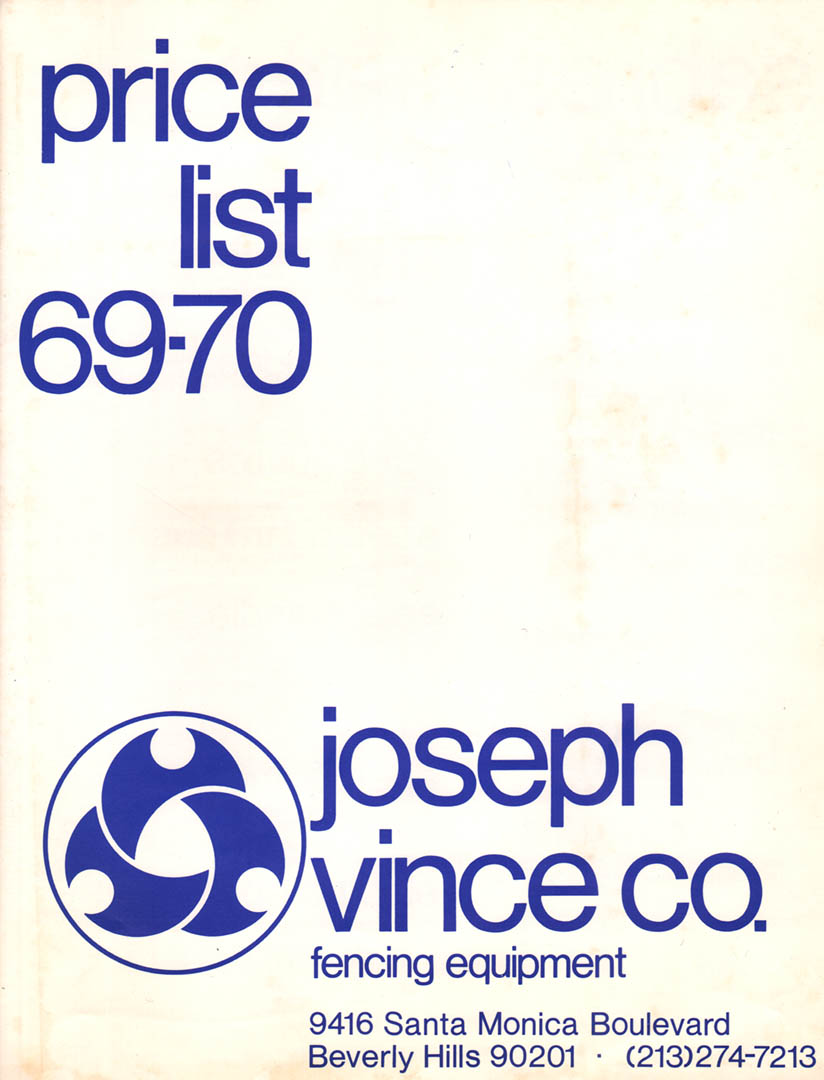
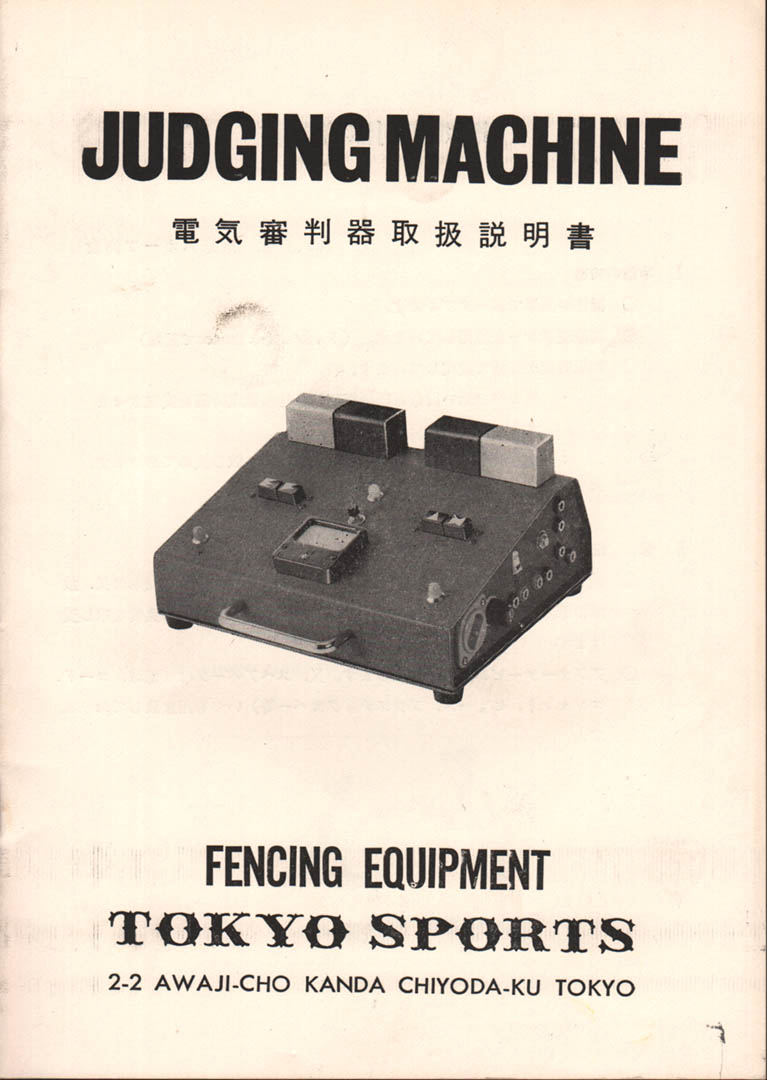
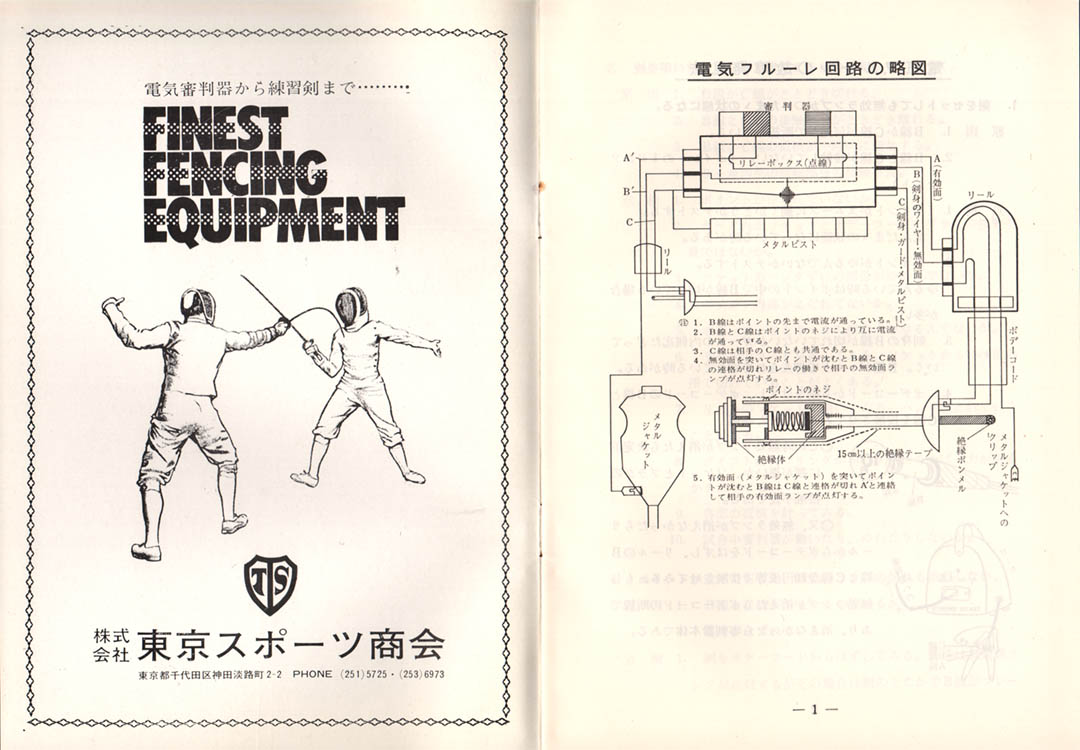
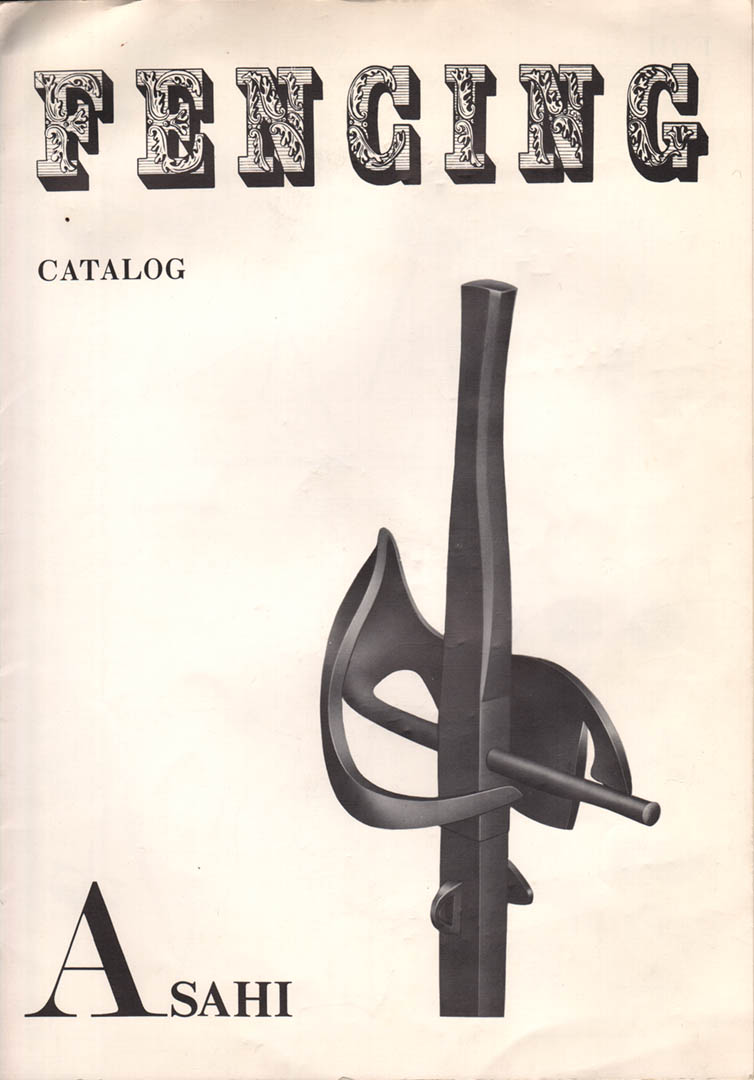
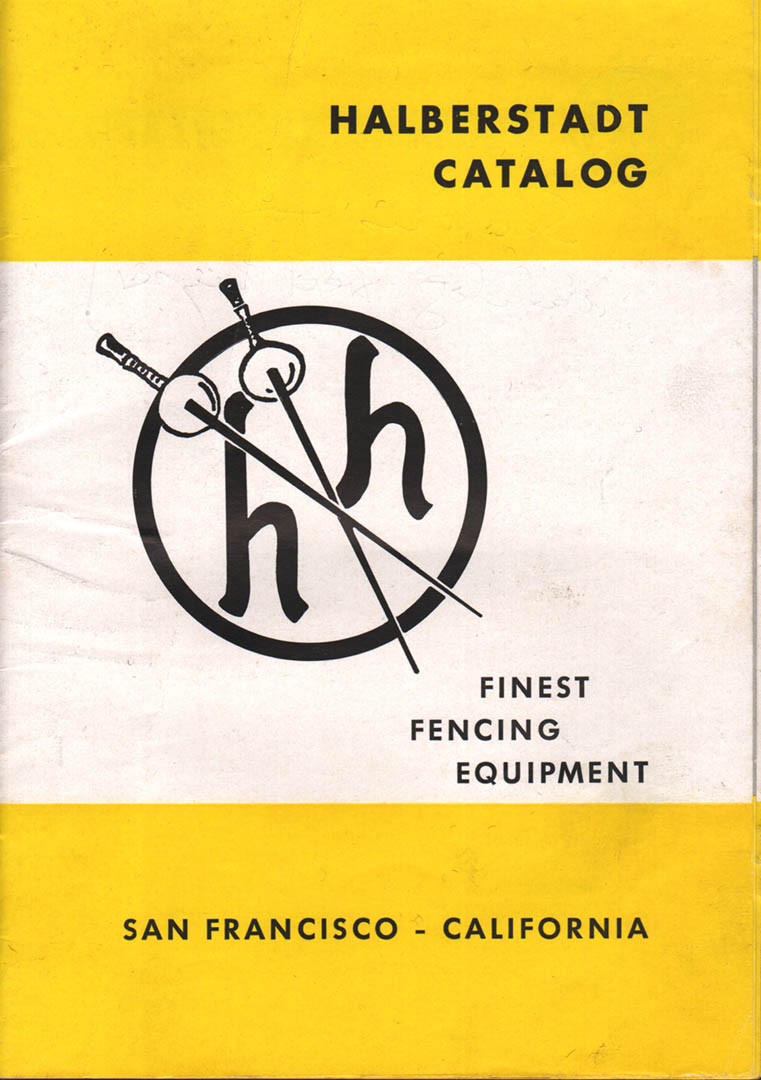
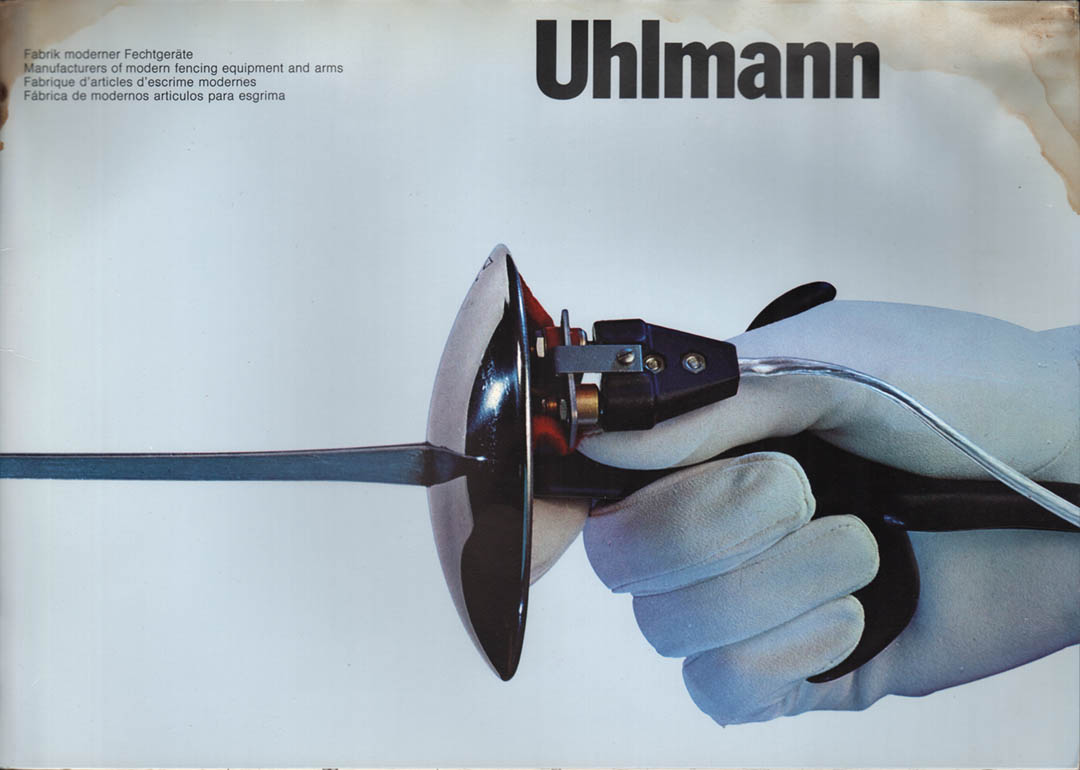
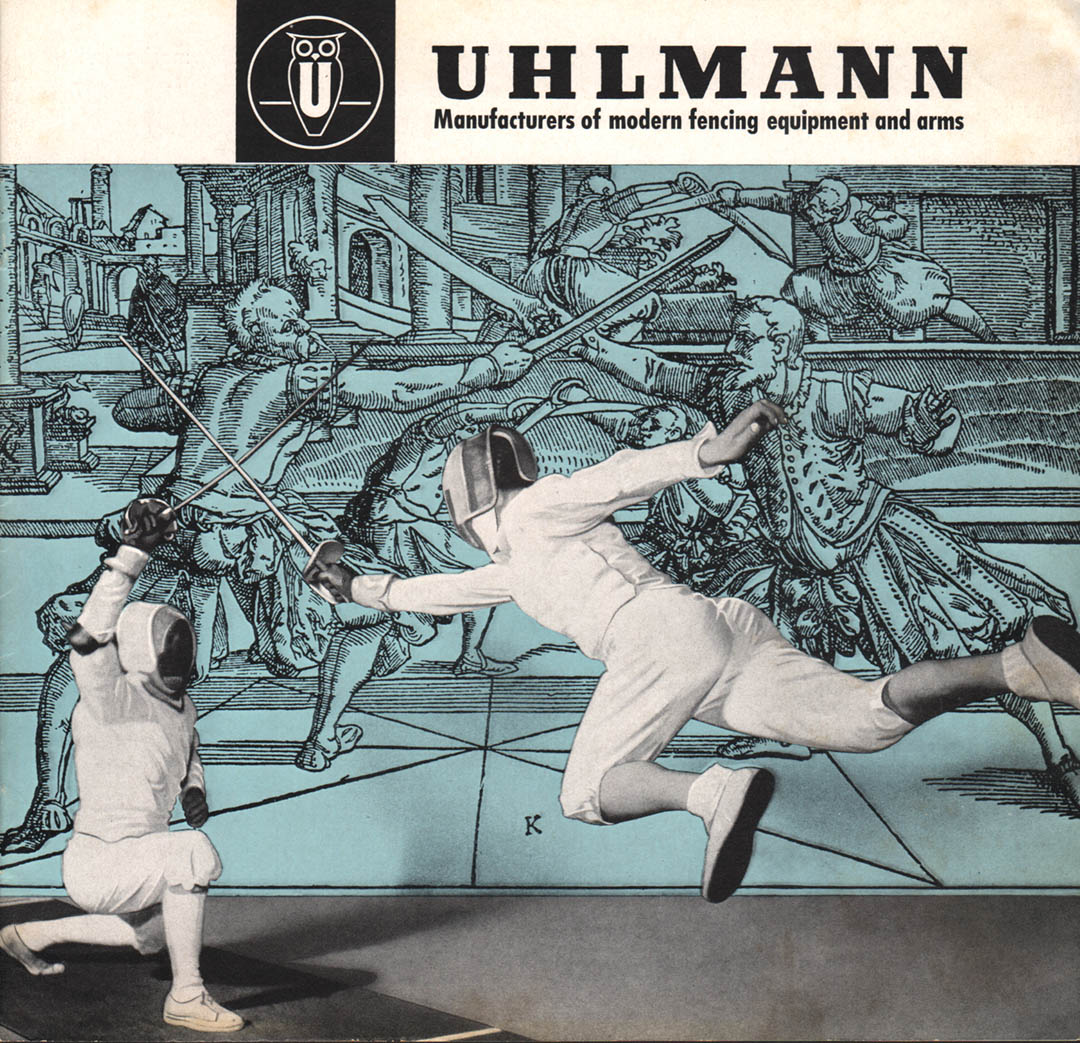
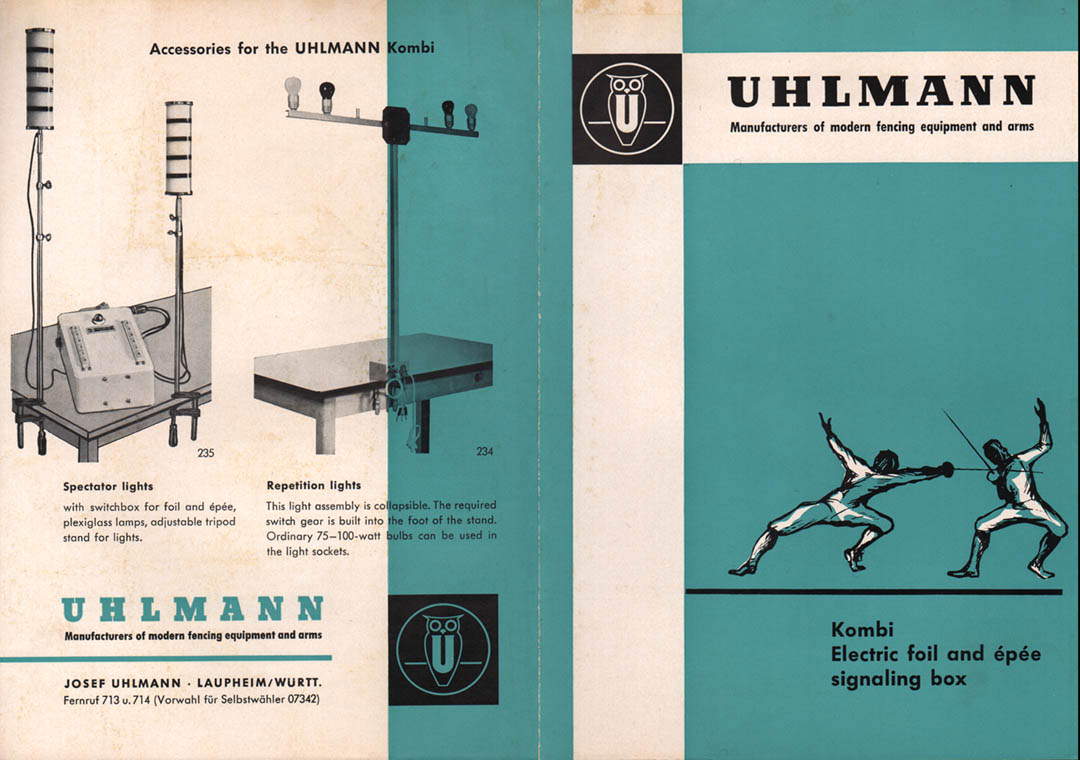
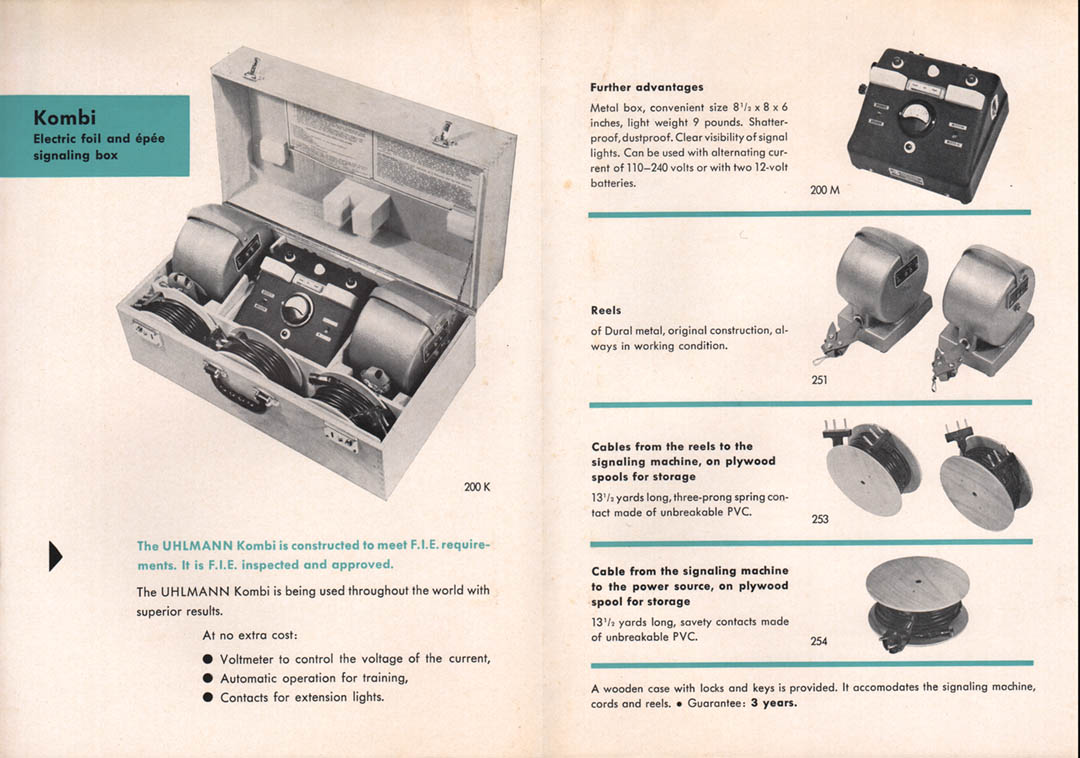
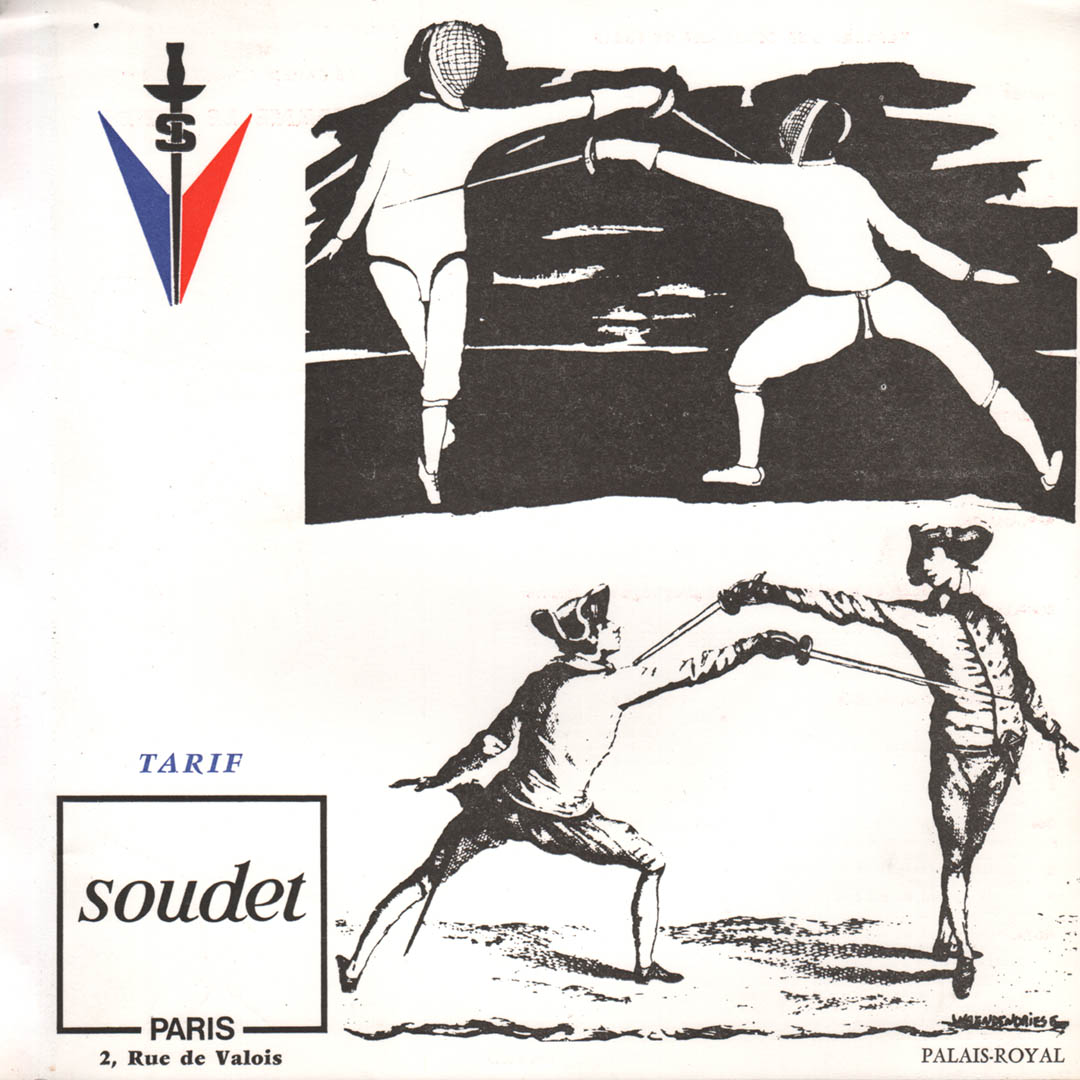
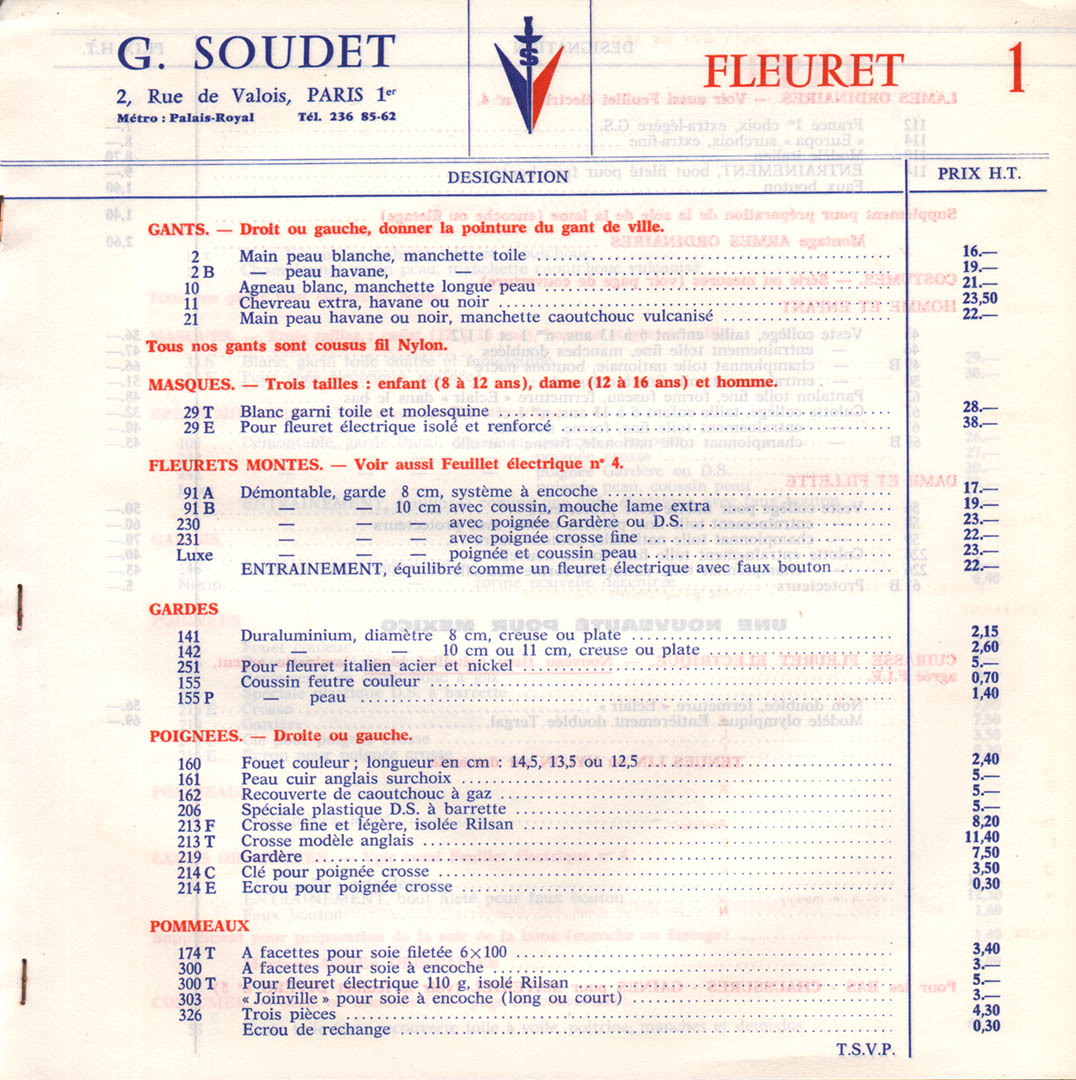
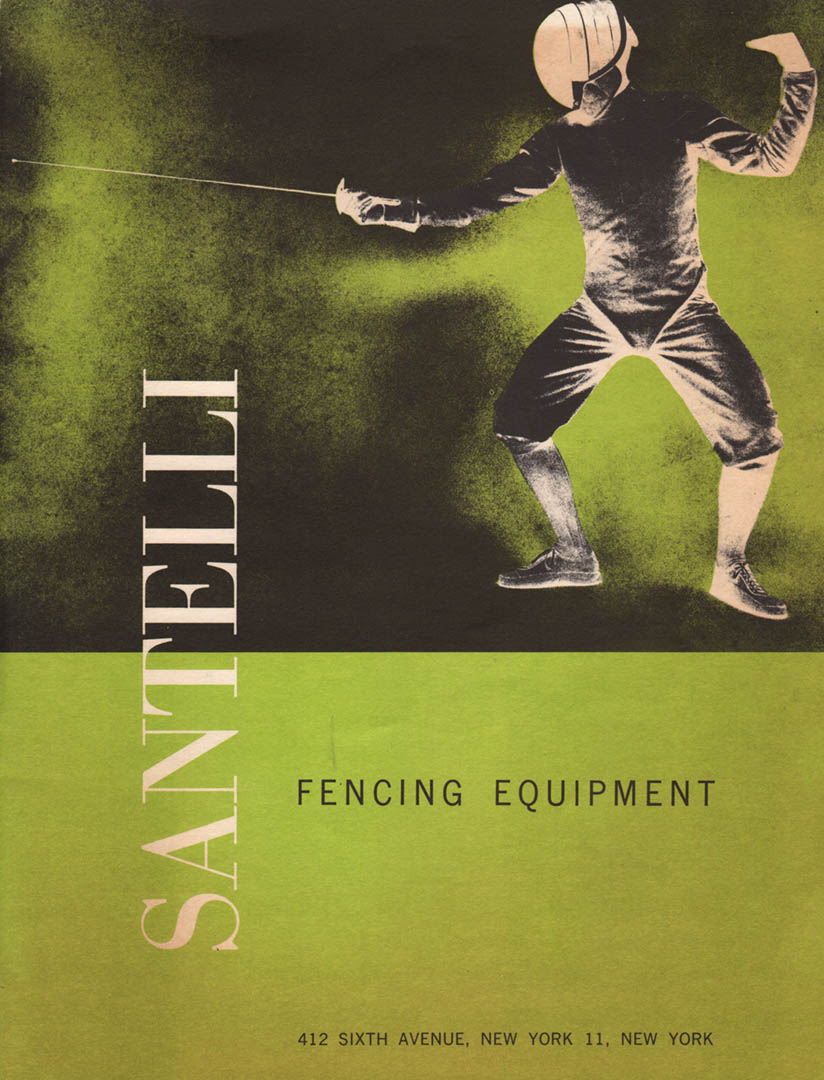
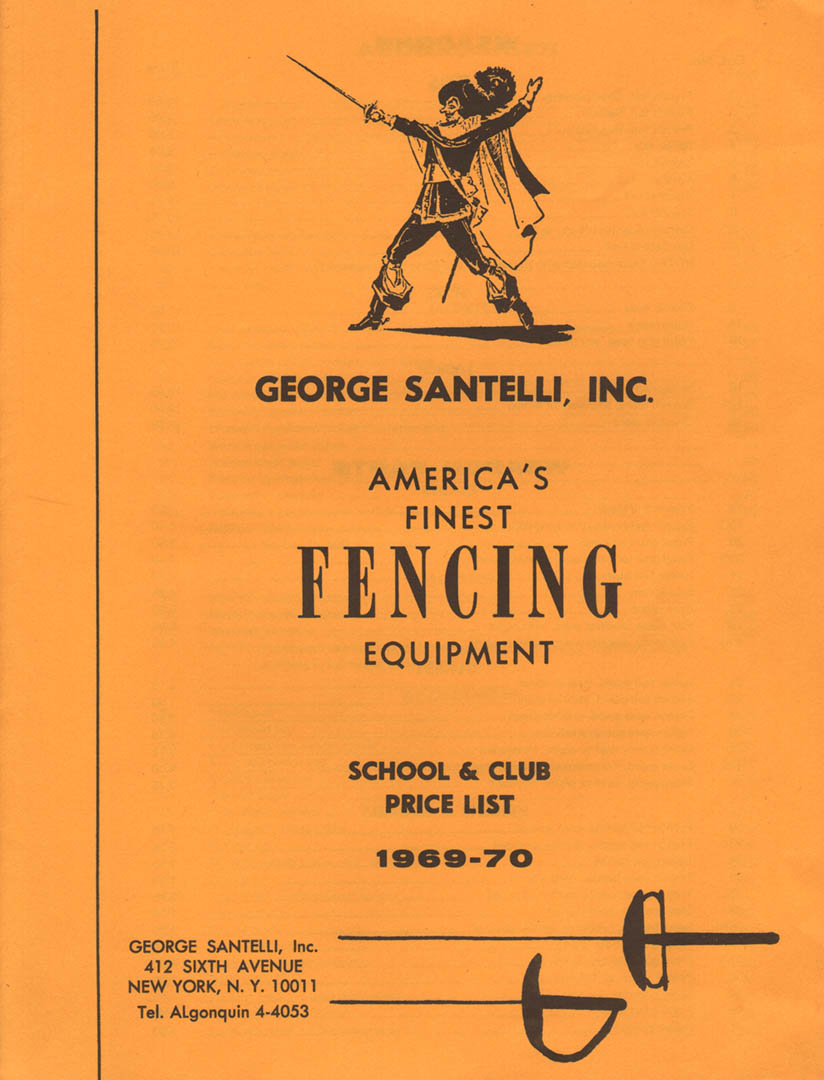
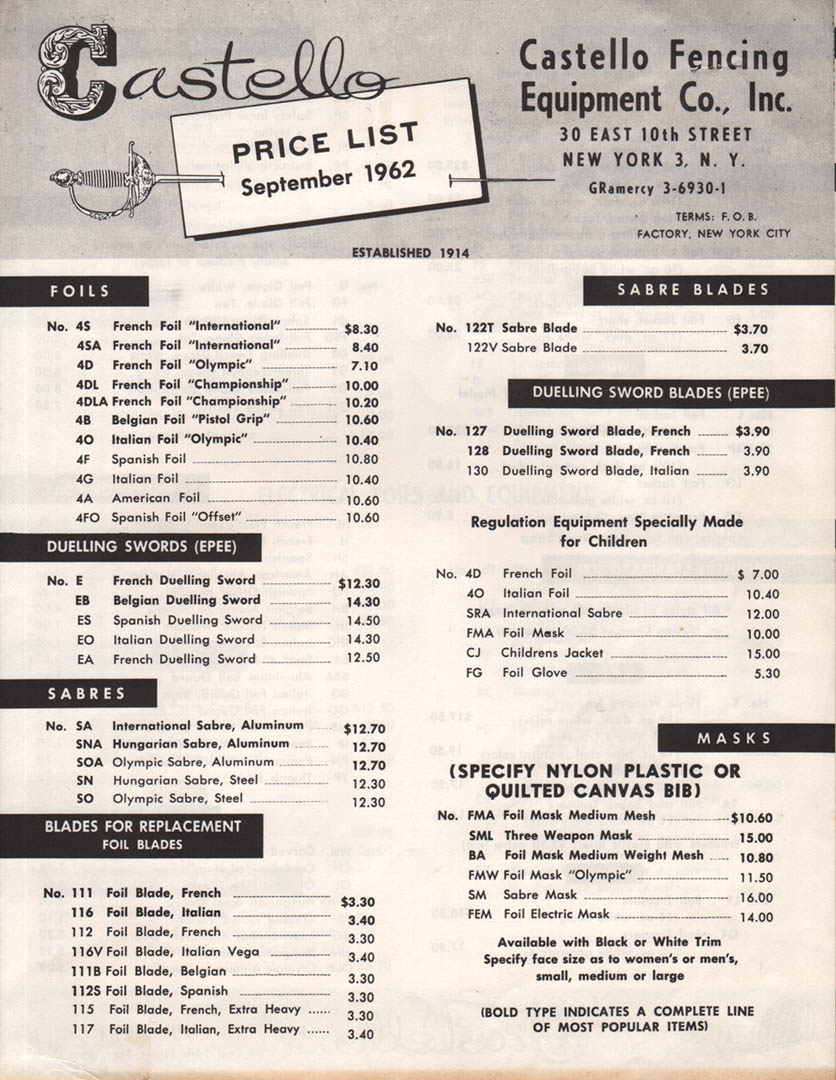
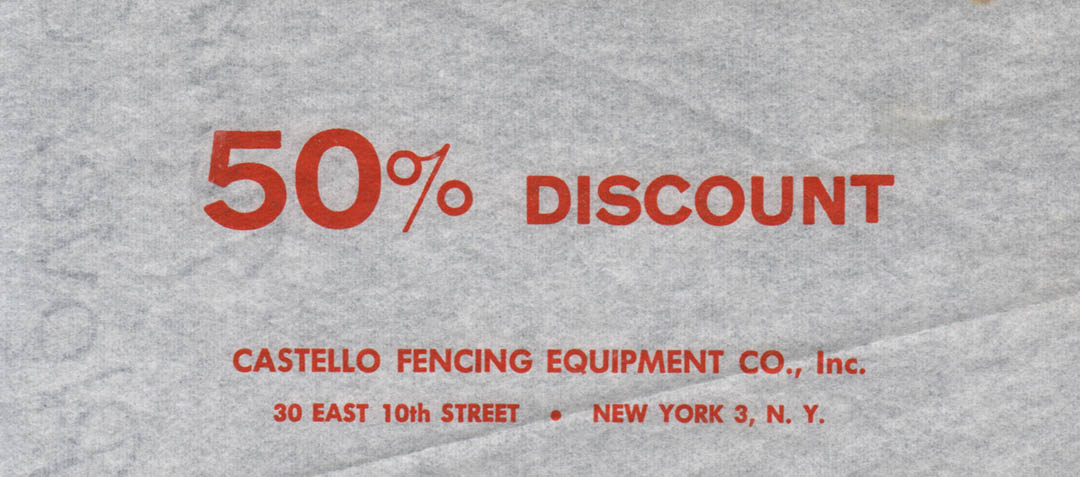
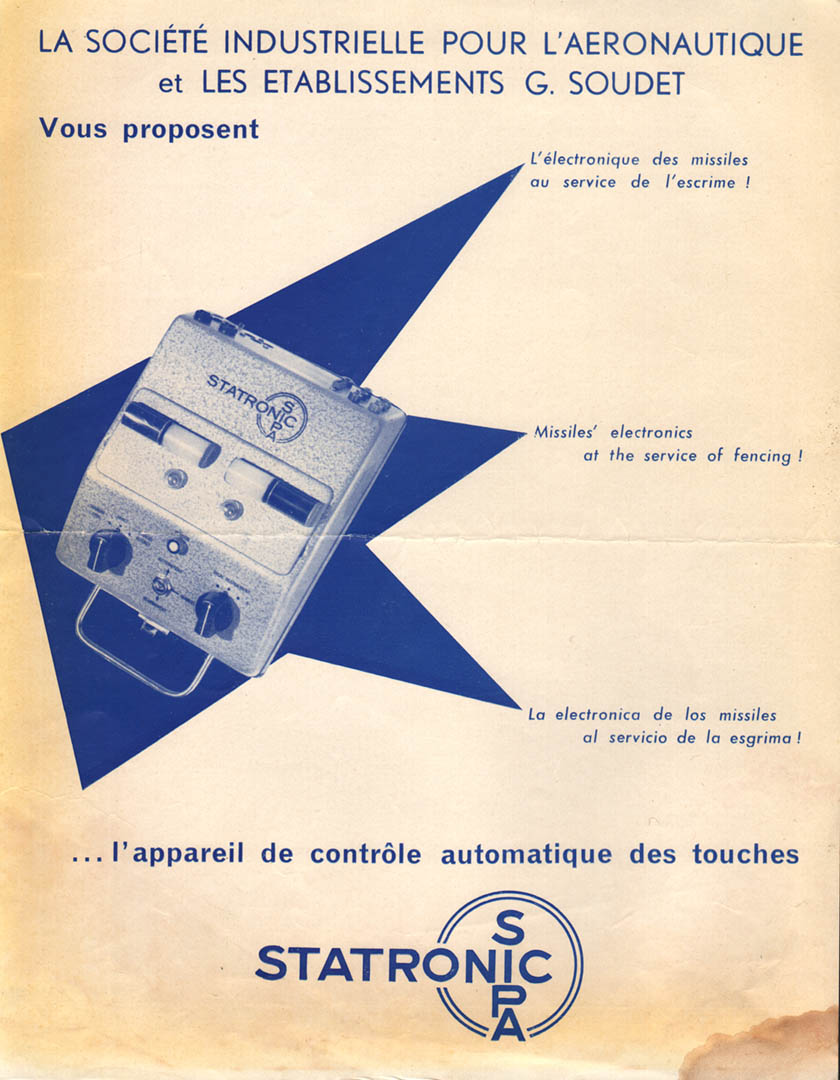
AFS didn’t make the cut (not a pun)? The AFS catalogs of the late 80s-early 90s were hand-drawn by yours truly. 😉
this is great… do you have the whole of the catalogues scanned in ?
I have quite a few but way more recent I shoudl scan and make available online (I doubt they are copyrighted…lol)